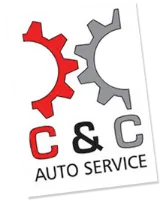What Do Brake Pistons Do?
How a Brake Piston Works
Brake pistons are responsible for the brake pads touching the disc brakes, which press against the rotors to help your vehicle stop. When you hit the brakes, brake fluid travels from the master cylinder into the brake caliper. The brake piston relies on Pascal’s Law. Pressure equals force divided by area or P =F/A. Whenever pressure is applied to the fluid, it travels uniformly in all directions. The brake piston transfers energy from the pedal to the brakes to help you stop your vehicle.
At C & C Auto Service in Raleigh, North Carolina, we keep your vehicle safe with our brake check-ups and preventative maintenance so you avoid expensive brake repairs.
The Parts of the Wheel
The wheel hub assembly, disc brake rotor, brake caliper, wheel, and lug nuts. The wheel hub assembly holds the wheel and the disc rotor, and the bearing inside allows for smooth rotation.
The brake pads squeeze the disc rotor to cause friction, helping the vehicle decelerate. The disc brake rotor produces large amounts of heat from friction, and holes on the rotor keep it cool with ventilation to prevent damage.
The brake caliper assembly squeezes the brake pads to the surface of the rotor, creating friction and decelerating the wheel speed allowing the vehicle to stop.
The brake caliper comprises a caliper bracket, slider pins, dust boots, inner and outer brake pads, and a caliper frame. The Banjo Frame, Banjo Connector, copper washers, and Banjo Bolt are additional parts. Inside the Banjo fitting, fluid is released until it reaches the piston. Pressurized fluid from the pedal side pushes the piston with considerable force, and the caliper frame slides along the slider pins within the fixed extension.
How a Brake Piston Works
When you apply the brake, the caliper will receive high-pressure hydraulic fluid from the brake’s master cylinder. The pressurized fluid makes the piston squeeze the brake pad against the disc rotor surface.
The backward force of the fluid will push the caliper frame along the slide pin, which makes the outer brake pad squeeze the other side of the disc rotor. The fluid pushes the piston, and the piston pushes the brake pad.
Damage to the brake piston usually comes from road dust, debris, rust, weather, or age. If the caliper pins corrode, they will not extend or retract smoothly in the caliper. Rust is a culprit for drivers where salt and sand are used on the roads during winter driving.
Periodic maintenance at C & C Auto Service is always your best choice. We offer free Wi-Fi and coffee while you wait, and if you need a ride home, a local shuttle service is available.
Call us to schedule an appointment at [as_phone] or stop by our shop located at [location_link].
